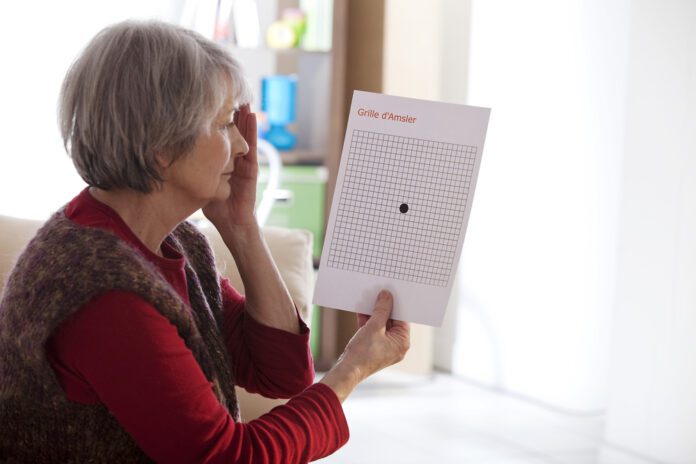Overview Of Vision Loss – AMD
Age-related macular degeneration, or vision loss -AMD, is an eye condition that blurs sharp central vision needed for activities like reading and driving.
“Age-related” defines this as more often occurring in older people. “Macular” in this context means this condition affects the macula, a part of the eye. AMD is also a common eye disease, and because of this, it is also a leading cause of vision loss for people over 50 years old.
AMD doesn’t cause complete blindness. However it contributes to losing central vision, which can make it harder to drive, see faces, or partake in close-range work like cooking and following a recipe.
AMD builds quite slowly in some cases. Even if you contract early AMD, you might not experience vision loss for a long period of time. For other people, on the other hand, AMD advances faster and escalates to affect central vision loss in one eye, or even both eyes.
What Is Macular Degeneration
Macular Degeneration is the largest cause of vision loss, which also affects over 10 million Americans alone. This is significant because this affects more people than cataracts and glaucoma combined. Currently, Macular Degeneration is classified as an incurable eye disease.
Macular Degeneration is then caused by a deteriorating retina. This is the inside back layer of the eye that records seen images and are sent through the optic nerve, from the eye to the brain. The retina’s central part is the macula. This will then be responsible for focusing central vision in the eye controls our ability to recognize fine detail, like reading.
Causes Of Vision Loss – AMD
The macula in the back of the retina makes vision more detailed and sharper. The macula is also a yellow spot in the center of the retina. It has a large size of two natural color pigments, lutein and zeaxanthin.
AMD is results from a lack of blood supply to the macula due to damage in the area. This is also damaging to the macula itself.
There are two types of AMDs:
• Dry AMD: This emerges when blood vessels beneath the macula grow brittle and thin. Druses, which are small and yellow cavities, form and negatively impairs vision. Almost all cases of macular degeneration begin from this dry version.
• Wet AMD: This emerges in about 10% of people who have macular degeneration. New fragile and abnormal blood vessels then develop under the macula. These vessels will then potentially leak blood and other built-up fluid. This AMD is the cause of most vision loss in this condition.
Doctors are unsure what originally brings on AMD. The condition is abnormal before turning 55. This also occurs mostly in people 75 or older.
Risk factors for AMD include:
- Having a high-fat diet
- Being born female
- Being White
- Cigarette smoker
- A family history of this condition
Symptoms
As AMD develops, many people often begin to see a blurry area near the center of their vision. Progressively, this blurred section may get larger or you might even see some spots in your vision. Things in your line of sight may also seem less bright or vivid than before.
It is possible to also notice straight lines that begin to grow wavy. This is a potential warning sign for late-stage AMD. If you notice this symptom, visit your eye doctor as soon as possible.
Treatment Of Vision Loss – AMD
Currently, there is no treatment for early-stage AMD, so an eye doctor will probably just keep track of your vision’s progression with regular eye exams. Not smoking, eating healthy, and getting regular exercise can also help limit deteriorating vision.
If you are diagnosed with intermediate or late AMD, you might want to ask your eye doctor about treatment options and how the condition could affect your long-term vision in the future.
Other Information
In an eye exam, drops will be placed into your eyes to widen, or dilate, your pupils. The eye doctor will observe your dilated pupils by using a special lenses to view your eye’s blood vessels, retina, and optic nerve. Doing so, the doctor will look for specific changes in the macula and blood vessels and for any druses.
You may be asked to cover one eye and look at a pattern of lines called an Amsler grid. If the straight lines look wavy, it may be a sign of AMD.
Other tests that may be done include:
- Using light waves to view the retina (optical coherence tomography)
- A test that measures the pigment in the macula
- Using special dye and camera to look at blood flow in the retina (fluorescein angiogram)
- Taking a photo of the inner lining of the eye (fundus photography)



